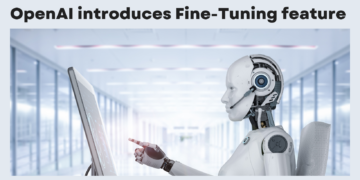Understanding Intelligent Automation: AI, Robotics, and Beyond
In today’s rapidly evolving technological landscape, integrating Artificial Intelligence (AI) and robotics has given rise to a new paradigm known as Intelligent Automation. This convergence of AI and robotics technologies holds tremendous potential for transforming industries, enhancing productivity, and reshaping the future of work. In this article, we will explore the concept of Intelligent Automation, its components, and the groundbreaking possibilities it brings.
Intelligent Automation combines AI and robotics, enabling automation systems to possess cognitive capabilities, decision-making abilities, and advanced sensory perception. By integrating AI algorithms, machine learning techniques, and robotics hardware, IA systems can perform complex tasks with speed, accuracy, and adaptability, making them increasingly invaluable across various domains.
Cognitive Robotics: AI-Powered Machines with Human-like Intelligence
One of the key components of Intelligent Automation is cognitive robotics. Cognitive robots are AI-enabled machines with human-like intelligence, allowing them to learn, reason, and make autonomous decisions. These robots have advanced sensors, processors, and software algorithms that enable them to perceive the environment, understand context, and respond appropriately.
Cognitive robots are revolutionizing industries by taking automation to new heights. In manufacturing, they can analyze data in real-time to optimize production processes and detect anomalies. In healthcare, cognitive robots assist in complex surgeries, analyze medical images, and even provide personalized patient care. The potential applications of cognitive robotics extend to logistics, exploration, agriculture, and more, making them versatile and adaptable to various tasks and environments.
Collaborative Intelligence in Action: Humans and AI-Enabled Robots Working Together
Intelligent Automation doesn’t aim to replace humans but to augment human capabilities and foster collaborative intelligence. In industries where precision, efficiency, and safety are paramount, humans and AI-enabled robots are working together to accomplish complex tasks that were once unimaginable.
Manufacturing is a prime example of collaborative intelligence in action. Human workers collaborate with robots to streamline production lines, increase output, and ensure quality control. Robots handle repetitive and physically demanding tasks, while humans provide oversight, problem-solving, and creativity. The result is enhanced productivity, improved worker safety, and optimized processes.
In healthcare, collaborative intelligence is transforming patient care. Surgical robots, controlled by skilled surgeons, enable minimally invasive procedures with increased precision and reduced recovery times. AI-enabled diagnostic tools assist medical professionals in analyzing vast amounts of patient data, aiding in accurate diagnoses and personalized treatment plans.
AI and Robotics Advancements: From Vision Systems to Natural Language Processing
The advancement of AI and robotics technologies is instrumental in driving Intelligent Automation forward. Vision systems, powered by AI algorithms and advanced cameras, enable robots to perceive and navigate the physical world with remarkable accuracy. These robots can identify objects, detect obstacles, and perform tasks that require visual analysis.
Natural Language Processing (NLP) is another significant advancement in Intelligent Automation. With NLP, robots can understand and process human language, facilitating seamless communication between humans and machines. Voice-activated assistants, chatbots, and language translation tools show how NLP revolutionizes human-robot interaction.
Other cutting-edge advancements include machine learning algorithms that enable robots to learn from data and improve their performance over time. Reinforcement learning techniques allow robots to make decisions based on feedback and rewards, leading to adaptive and autonomous behavior. These advancements are driving the development of Intelligent Automation systems that can continuously learn, adapt, and optimize their performance.
The Future of Work: Opportunities and Challenges in the Intelligent Automation Era
As Intelligent Automation continues to progress, it presents opportunities and challenges for the future of work. On the one hand, IA opens up exciting possibilities for increased productivity, improved efficiency, and innovation. Mundane and repetitive tasks can be automated, allowing human workers to focus on more creative and strategic endeavors.
New job roles will emerge in the Intelligent Automation era. There will be a growing demand for individuals skilled in AI, robotics, data analytics, and human-robot collaboration. Jobs that require a human touch, critical thinking, and emotional intelligence will become more valuable, emphasizing the importance of upskilling and reskilling the workforce to adapt to changing requirements.
However, the rise of Intelligent Automation also brings challenges. Job displacement is a concern as some routine tasks become automated. This necessitates proactive measures to reskill and transition workers into new roles that complement IA systems. Collaboration between governments, educational institutions, and industries is crucial in preparing the workforce for the future.
Ethical considerations surrounding Intelligent Automation also need to be addressed. Ensuring transparency, fairness, and accountability in AI algorithms and robotics systems is essential. The responsible development and deployment of Intelligent Automation technologies are vital to avoid biases, protect privacy, and maintain public trust.



























